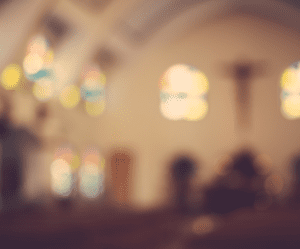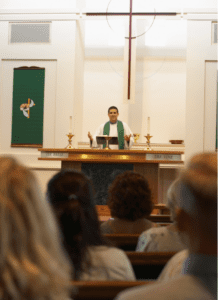
Religious trauma can leave deep emotional wounds. Moreover, it can tarnish our perception of spirituality and causing us to question the very foundations of our faith. But what happens when the desire to explore a new spiritual path emerges, despite the pain of past religious trauma? Is it possible to find solace, growth, and a safer experience within a new church community? This introspective journey is not an easy one, but it holds the potential for healing and rediscovery.
For those who have experienced religious trauma, the idea of stepping foot into another church may evoke a mix of excitement, anxiety, and trepidation. The wounds of the past can make it challenging to trust religious institutions and their leaders. They can cause a hesitation to open our hearts once again. However, it is important to remember that not all churches are the same, and embarking on this new path can lead to a transformative and healing experience.

Finding a safer church experience involves careful consideration and intentional steps towards healing. It means seeking out a community that embodies the values of compassion, understanding, and respect. It requires a willingness to ask questions, set boundaries, and hold the church accountable for their actions. Above all, it involves reclaiming your autonomy and finding a space where you can embrace your spirituality in a healthy and authentic way.
While the path ahead may seem daunting, there are steps you can take to ensure a safer church experience. First, educate yourself about the signs of a healthy church community, such as a commitment to open dialogue, inclusivity, and a zero-tolerance policy for abuse or manipulation. Seek out churches that prioritize transparency, accountability, and the protection of all members, especially vulnerable individuals such as children and survivors of trauma.

1. How do members talk about leadership?
Let’s address the elephant in the room: it is often the leaders who played a significant role in your religious trauma. Pay attention to how members speak about their leaders. Are they blindly reverent, unquestioning, and unwilling to acknowledge their flaws? Or do they encourage critical thinking, accountability, and open dialogue? Understanding the dynamics surrounding leadership will shed light on the level of control, manipulation, or abuse that may be present.

2. How do members of the new church talk about past members?
We’ve all heard the saying, “Don’t speak ill of the dead.” Well, in this case, it’s more like, “Don’t speak ill of the departed believers.” Take note of how current members discuss those who have left the religious community. Are they demonized, shamed, or dismissed as weak-willed? Healthy religious communities should acknowledge and respect the choices of individuals who choose a different path without resorting to character assassination or ostracization.

3. How is conflict in the new church discussed?
Religious communities undoubtedly aren’t immune to conflict, it’s essential to examine how they handle it. Do they promote open dialogue and healthy conflict resolution, or do they sweep disagreements under the rug and pretend everything is perfect? Understanding how past conflicts are addressed within the community can give you insight into the potential for emotional and psychological harm. Remember, a healthy religious community allows space for differences and fosters an environment of mutual respect.
4. What are precautions taken with children?
Without a doubt, the safety and well-being of children should be a top priority within any religious community. Beyond simply assessing the presence of safety measures, it’s crucial to examine how members view and uphold these precautions. Are they seen as necessary and non-negotiable, or are they dismissed as unnecessary inconveniences?
Pay attention to how members respond to discussions about child protection policies. Do they show a genuine concern for the welfare of children? Or do they downplay the importance of safeguarding practices? A healthy religious community should demonstrate an unwavering commitment to protecting children from harm, both within and outside their religious activities.
